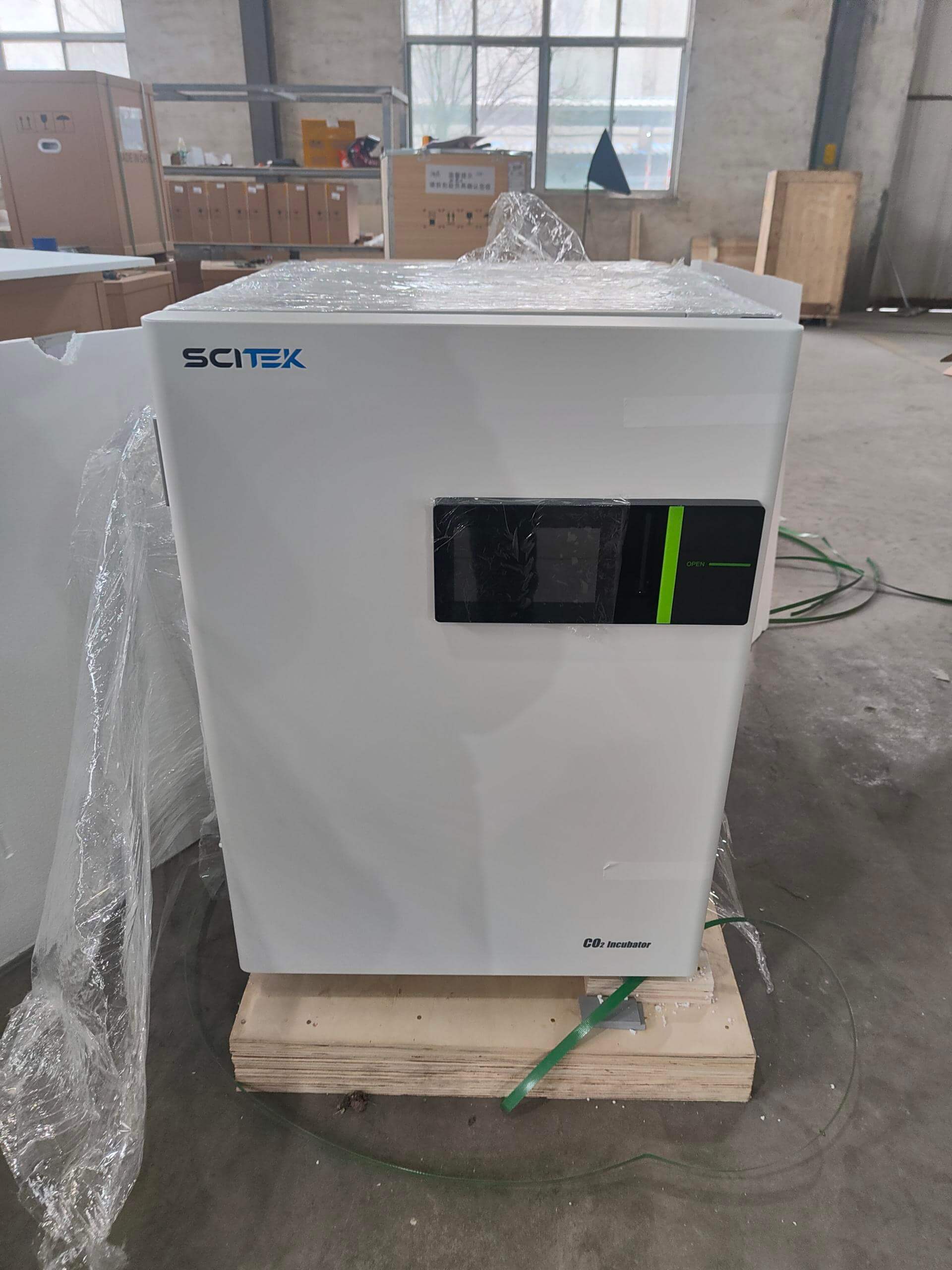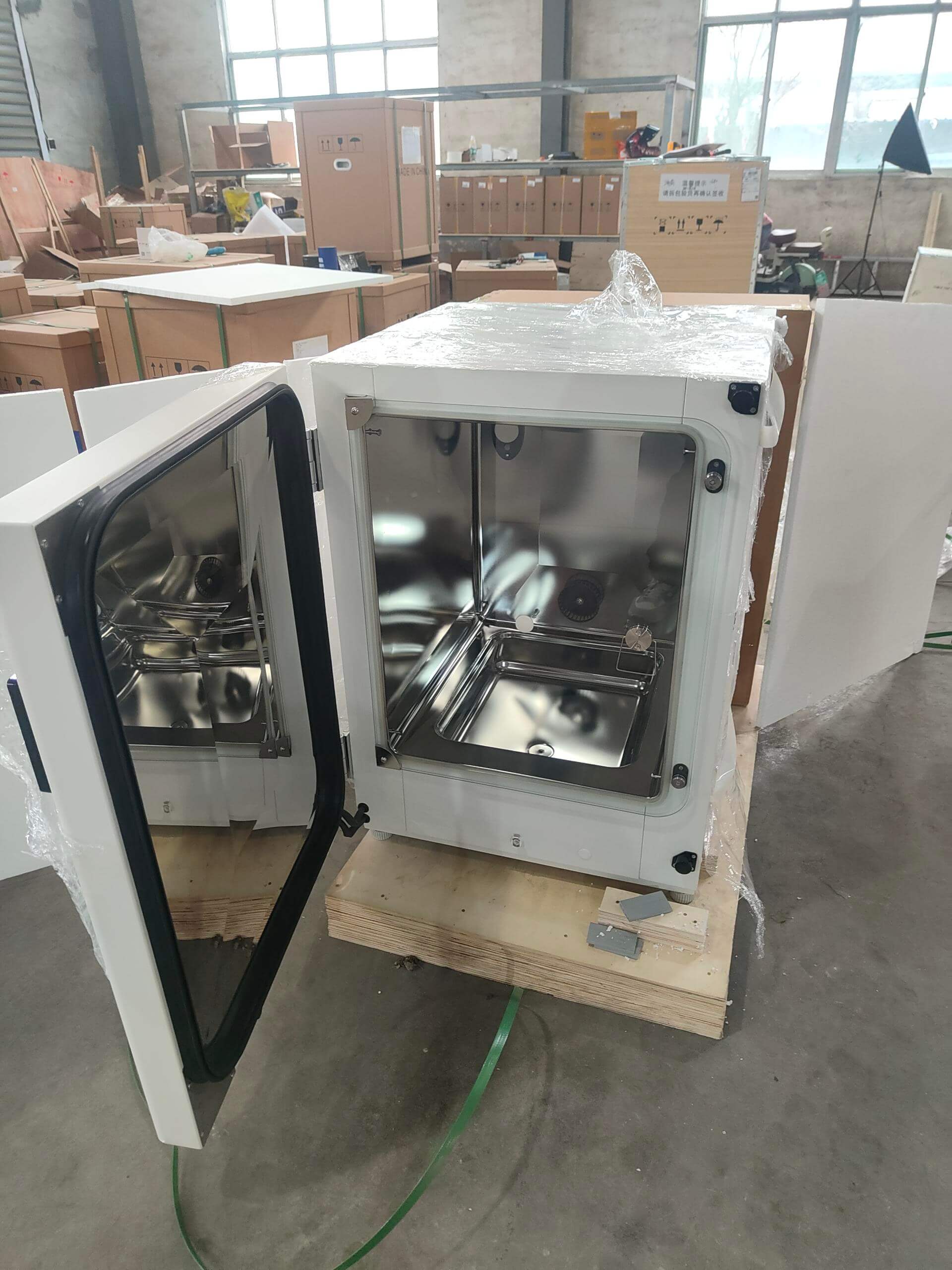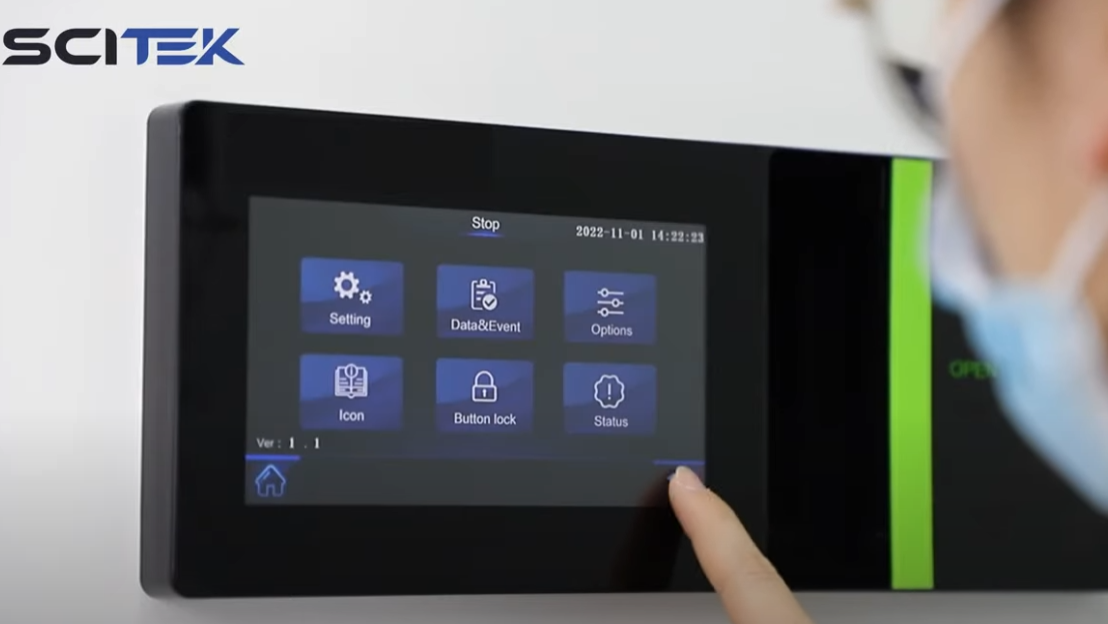CO2 incubators are widely used in laboratories in the fields of medicine, pharmacy and microbiology. Designed to maintain precise humidity, temperature and CO2 levels, CO2 incubators provide optimal conditions for cell growth and development. In the following section, we will take a closer look at the principle, construction, applications and calibration specifications.
What is a CO2 incubator

A CO2 incubator is a device for the in vitro cultivation of cells/tissues and is an advanced instrument for the cultivation of cells, tissues and bacteria. The main purpose of a CO2 incubator is to create as natural a growth environment as possible for cell and tissue culture. It is a key piece of equipment necessary for carrying out immunology, oncology, genetics and bioengineering. Cells are sensitive to changes in pH, temperature and humidity during growth, and the controlled environment of all incubators is critical to cell growth and proliferation.
How does a CO2 incubator work
In a CO2 incubator, a constant CO2 concentration is maintained by adding CO2 to the incubator. It simulates the physiological conditions required for cell growth and proliferation by controlling temperature, humidity and CO2 concentration. Molecular sieve adsorption, chemical absorption, membrane separation and other technologies are generally used to achieve CO2 control and regulation. CO2 levels are usually maintained at around 5%, which is similar to the in vivo environment. This controlled environment supports the growth of cultured cells and provides a reliable platform for researchers' experiments.
Structure of the CO2 incubator

A CO2 incubator generally consists of a chamber, carbon dioxide, temperature, humidity, electrical control system, and other parts.
Enclosure
The main body of the CO2 incubator, typically crafted from stainless steel for excellent corrosion resistance, houses culture racks or trays for cell or microorganism cultivation. The enclosure is also equipped with user-friendly observation windows, lighting, and other tools, facilitating easy and efficient monitoring of the incubator's internal processes.
CO2 Control System
The CO2 control system is the core part of the CO2 incubator. Its main function is to control and regulate CO2 through chemical absorption, molecular sieve adsorption, membrane separation, and other technologies. It generally consists of a sensor, controller, CO2 gas source, and so on.
Temperature Control System
The temperature control system is also an important part of the CO2 incubator; its main function is to accurately control and regulate the temperature inside the incubator. The temperature control system generally consists of controllers, sensors, heaters, etc.
Humidity Control System
The humidity control system is an important part of CO2. Its main function is to accurately control and regulate the humidity inside the incubator. The humidity control system generally consists of controllers, sensors, humidifiers, and so on.
Electrical control system
The electrical control system serves as the central hub of the CO2 incubators, providing comprehensive control and monitoring of the CO2 control system, temperature control system, humidity control system, and more. Its role is pivotal in ensuring the smooth operation of the incubator, giving you peace of mind in your research.
Types of Heating for CO2 Incubators
Maintaining a constant temperature inside the incubator is essential to maintaining healthy cell growth, and CO2 is available in two types of heating configurations: direct heat and water-jacketed heating.
| Type | Direct heat | Water-jacket type |
| Pros | Provides heat directly to the chamber using a heating element for fast recovery of temperature and gas concentration, suitable for short-term incubation and experiments with frequent opening of the chamber door | By heating the chamber walls with water, the heat from the water acts as a thermal buffer and reduces vibration during power outages. Ideal for areas where there are restrictions on the use of electricity or where there are frequent power cuts |
| Cons | Power cuts are not possible | Water in the tank below the water level or dry will reduce the life of the incubator |
How to use a CO2 incubator

Before use:
Place the CO2 incubator in a flat, dry and ventilated environment.
Switch on the power (Note: water jacket type CO2 incubator needs to be filled with water in the water tank first, and then switch on the power switch).
Confirm the purity of the CO2 gas used is up to standard.
Check the cylinder pressure; if it is lower than 0.2 MPa, the cylinder should be replaced.
Sterilize the tank
Do not adjust the inflow gas pressure too high. The maximum pressure of the pressure-reducing valve should not exceed 0.1 Mpa to prevent the pipeline from breaking.
After checking, add the appropriate amount of sterile distilled water or sterile deionized water into the tank's distilled water tank. (Replace the water in the tank at least once every fortnight.)
During use:
Set the temperature, humidity and CO2 concentration.
Place the petri dish of cells or tissues to be cultured (wear sterile gloves before holding or placing the object)
Try to shorten the opening time and reduce the number of opening times to avoid air pollution.
After use:
Clean the CO2 incubator's chamber after use and do not collide with sensors and other parts.
If it will not be used again shortly, before closing it, you must remove the moisture in the chamber and open the glass door to ventilate for 24 hours.
Water must be removed from the chamber before handling the water-jacketed incubator.
To dismantle the bracket shroud inside the chamber, use the special spanner supplied with the unit, and do not apply excessive force.
The shelves and humidifying discs in the CO2 incubator chamber should be taken out before handling to prevent the glass door from being damaged by collision.
The CO2 incubator can not be inverted when handling and must not lift the door to avoid deformation of the door.
What are CO2 incubators used for
Cell Cultivation
Culturing cells is one of the most common uses of incubators, including human, animal, and plant cells. In cell culture, the CO2 atmosphere environment can provide the carbon dioxide and buffer needed for cell growth to ensure the normal growth and reproduction of cells.
Microbiological Cultures
Microorganisms such as bacteria, fungi, and viruses can also be cultured in the incubator of choice for propagation. It is also possible to co-culture microorganisms and cells.
Biological Research
Medical products are developed specifically for innovative treatments. In the research, development and quality assurance of these drugs, cell and tissue cultures are grown in CO2 incubators.
Developing Biosensors
A sensor is a device that converts a physiologically sensitive element into a digital signal that can subsequently be used for research using physical or chemical stimuli. CO2 incubators are ideal for various processes, including freezing and transferring cells, infecting cell lines, and coloring cell cultures.
How to buy a CO2 incubator correctly?
Generally speaking, users have two most basic requirements for carbon dioxide incubators:
The first is that the CO2 incubator should be able to provide the most accurate and stable control of temperature, CO2 concentration and humidity in order to facilitate the progress of their research work;
The second requirement is that the CO2 incubator effectively protects against microbial contamination inside it. It can periodically eliminate the contamination to protect the research results and prevent the loss of samples.
CO2 incubator is widely used, and there are many types and models of CO2 incubator on the market, so how do we choose a suitable CO2 incubator for cell culture? Before selecting a CO2 incubator, you need to consider the following factors:
Temperature control type
The common heating methods are direct heat and water jacket type. The direct-heat type is characterized by faster heating and quicker temperature recovery than water-jacketed incubators, which is particularly beneficial for short-term cultures and cultures that require frequent opening and closing of the door. In addition, the direct heat design is simpler for the user than the water jacket (the water jacket requires filling, emptying, cleaning the tank, and frequent monitoring of the tank's operation).
Sensor: Infrared Sensor (IR) VS Thermal Conductive Sensor (TC)
The sensor mainly determines the detection of CO2 concentration in the incubator. Common sensors are mainly classified as IR or TC.
TC works by measuring the resistance change between two electric thermostats. Its disadvantage is that the change in temperature and relative humidity inside the chamber affects the sensor's accuracy. So, when precise incubation conditions are required and the incubator door is opened frequently, this control system is less suitable.
The IR sensor offers more precise CO2 control than the TC system. It detects the CO2 level using an optical sensor. It is particularly suitable for cell cultures that require frequent opening of the incubator door. However, this system is more expensive than the TC system and should be considered with budgetary considerations.
Convection System: Forced Convection vs Natural Convection
Natural convection: the natural flow of air by the natural flow of airflow principles (hot air up, cold air down, natural wind, etc.) to implement the natural flow of air.
Forced convection:
The use of some fans.
Heating (or cooling) equipment.
Specially designed ducts (or ducts) to make the airflow in a particular environment.
Forced convection generally has artificial intervention components.
Natural convection on the equipment requirements are very low, but it is also the most basic convection method. However, the equipment used to enhance the airflow effect will usually be a high-quality stainless steel plate equipped with air ducts. Fans are installed to form forced convection to improve the uniformity of temperature and CO2 concentration in the incubator.
In addition to the three points mentioned above, which require special attention when selecting an incubator, the following points should be considered.
1. The rate and accuracy of parameter recovery after opening the door
2. Ease of operation
3. The quality and cleanliness of the internal environment
4. The availability of an automatic cycle sterilization system
5. Performance and quality of the incubator
6. Stackability of the chamber
7. Optional spare parts
How to calibrate CO2 incubator
1. Calibrate regularly:
Regular calibration of the CO2 incubator is essential to ensure its stability and accuracy. It is recommended to follow the manufacturer's guidelines for calibration, usually every six months or once a year.
2. Use of calibration gas:
The calibration process requires using calibration gases to ensure their purity and stability. According to international standards, calibration gases should be selected, properly prepared and checked before calibration.
3. Temperature and humidity:
In addition to the CO2 concentration, the temperature and humidity sensors need to be calibrated. This ensures the accuracy of the environmental parameters inside the incubator, which is essential for the culture of biological samples.
4. Calibration procedures:
The calibration procedure usually involves the following:
Setting the calibration gas flow and concentration.
Adjusting the incubator environment to the target parameters.
Checking and calibrating with calibration instruments.
5. Recording and Verification:
After completing the calibration, record the date of calibration, calibration results, and calibrator information. Then, verify that the incubator maintains a stable environment over time.
Conlusion
The CO2 incubator provides a stable, controlled, simulated in vivo environmental condition to promote cell growth, proliferation, and functional expression. Controlling temperature, humidity, CO2 concentration and other key parameters mimics the microenvironment of in vivo tissues to provide optimal conditions for cell growth. This is important for cell research and applications such as cell biology, drug screening, and disease modeling.

 English
English









